Thingiverse

OpenScad Surface Solids 1.2 by WilliamAAdams
by Thingiverse
Last crawled date: 2 years, 12 months ago
I was sitting around the kitchen table wondering how I could model a playground slide, or those water slide tubes.
This thing adds hermite curve/surface support to the OpenScad Surface Solids library.
The basic Hermite interpolation calculation has actually been lurking for a while, but now it's put to good usage. With this, there is now a lerp (linear interpolation), berp (bezier interpolation), and herp (hermite interpolation) in the library.
A Hermite curve is defined by two endpoints, and the tangent vectors to those points. It is somewhat related to a Bezier curve. In fact, I use the same Bernstein basis functions to express it. Some people may find it easier to deal with, some harder, but it's just another tool in the box to help you create surfaces.
In this particular case, I've added a 'sweep_hermite()' module to the renderer. This is really easy to work with. You define one curve to be your 'profile', and you define another curve to be the path along which you'll sweep that profile. The module will take care of creating the appropriate polyhedra to fill in the solid. You can give a thickness, and it will extrude in that direction. This is similar to the linear_extrude.
This also shows a general mechanism for doing sweeps with curves. To make it fully generalized, and to reduce the amount of code needed to support different curves, I'll be further developing the matrix representation of curves. That will essentially be the same as having function pointers for surface creation, if you catch my drift.
I've added some visual debugging support. If you decide to show the control frame, you'll get a nice rendering of the profile and sweeep curves, complete with their tangent vectors.
Using tangent vectors is interesting. You need to be mindful that a vector has a length and direction. The length influences the strength of pull in the particular direction. It's best if you think of them centered at [0,0,0] and point them in the direction you want them to go. You'll have to play around with setting them to get the gist of it.
It occurs to me that this might be a good tool to use while learning about different types of curves and surfaces. Particularly with the visual debugging, and the added bonus that you get to print out a physical thing after you've done all your hard playing around.
I made the license public domain, as this is well trod ground.
Are Splines in the offing?
At any rate...
This thing adds hermite curve/surface support to the OpenScad Surface Solids library.
The basic Hermite interpolation calculation has actually been lurking for a while, but now it's put to good usage. With this, there is now a lerp (linear interpolation), berp (bezier interpolation), and herp (hermite interpolation) in the library.
A Hermite curve is defined by two endpoints, and the tangent vectors to those points. It is somewhat related to a Bezier curve. In fact, I use the same Bernstein basis functions to express it. Some people may find it easier to deal with, some harder, but it's just another tool in the box to help you create surfaces.
In this particular case, I've added a 'sweep_hermite()' module to the renderer. This is really easy to work with. You define one curve to be your 'profile', and you define another curve to be the path along which you'll sweep that profile. The module will take care of creating the appropriate polyhedra to fill in the solid. You can give a thickness, and it will extrude in that direction. This is similar to the linear_extrude.
This also shows a general mechanism for doing sweeps with curves. To make it fully generalized, and to reduce the amount of code needed to support different curves, I'll be further developing the matrix representation of curves. That will essentially be the same as having function pointers for surface creation, if you catch my drift.
I've added some visual debugging support. If you decide to show the control frame, you'll get a nice rendering of the profile and sweeep curves, complete with their tangent vectors.
Using tangent vectors is interesting. You need to be mindful that a vector has a length and direction. The length influences the strength of pull in the particular direction. It's best if you think of them centered at [0,0,0] and point them in the direction you want them to go. You'll have to play around with setting them to get the gist of it.
It occurs to me that this might be a good tool to use while learning about different types of curves and surfaces. Particularly with the visual debugging, and the added bonus that you get to print out a physical thing after you've done all your hard playing around.
I made the license public domain, as this is well trod ground.
Are Splines in the offing?
At any rate...
Similar models
thingiverse
free

OpenScad Surface Solids by WilliamAAdams
...zier interpolation of mesh (berpm). i thought they would be fun names, and in line with the classic linear interpolation (lerp).
thingiverse
free

Bezier Boat by WilliamAAdams
...usion offered by the openscad bezier library.
this model takes about 3 minutes to generate the .stl from the .scad. not too bad.
thingiverse
free

Public Domain OpenScad Bezier Function by WilliamAAdams
...w different ways of using the beast. perhaps the coolest is using a bezier curve to change color over the surface of the object.
thingiverse
free
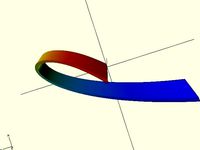
Bezier Ribbons 3D by WilliamAAdams
...ly want to get a sense for what's happening here, you might want to play with the model in openscad, or spin the .stl around.
thingiverse
free

Solid Bezier library by profezzorn
...solid bezier library by profezzorn
thingiverse
openscad library for creating solid objects based based on bezier curves.
thingiverse
free
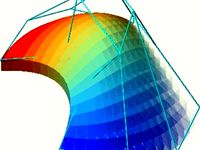
Bezier Mesh Surface V1.0 by WilliamAAdams
...day... enjoy!
update: blog entry to go with it:http://williamaadams.wordpress.com/2011/05/26/linear-extrusion-of-bezier-surfaces/
thingiverse
free
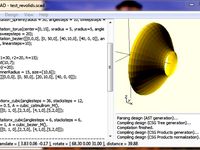
OpenScad Revolids version 0.5 by WilliamAAdams
... with.
update: 220611
added a picture of a hermite revolid with debugging normals (showing the circular normals to be incorrect).
thingiverse
free
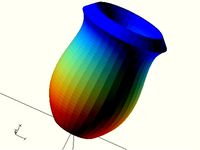
OpenScad Revoloids version 0.7 by WilliamAAdams
...teresting at some point to add the ability to do it more free form, but for now, it's best if your curve is planar in the x-y
thingiverse
free

Smooth Funnel, customizable by thehans
...poses.
the curved profile of the funnel is modeled using a bezier curve, generated with ckirby's bezier library for openscad.
thingiverse
free
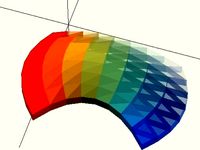
Bezier Mesh Surface V0.9 by WilliamAAdams
...using the polyhedron technique to its fullest. so, it shows that you can in fact generate manifold solids from closed polyhedra.
Williamaadams
thingiverse
free
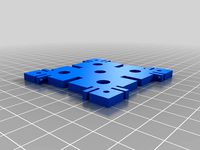
Toy Panel by WilliamAAdams
... most basic pieces of the klikko math system. it is a builder system where you can click panels together to form various shapes.
thingiverse
free
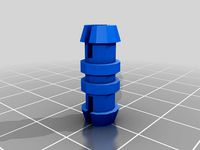
Yazzo by WilliamAAdams
...the connectors. the openscad file allows you to parameterize these connectors, and create any sizes you might want to play with.
thingiverse
free

Gandhi Lithophane by WilliamAAdams
...a lithophane of gandhi on a stamp.
any number of lithophane prints can be made by simply changing a file name in the .fab script.
thingiverse
free

Yazzo Servo Linkage by WilliamAAdams
...elative sizing of things. by default the arm is 1/2" thick to match the size of the sleeve bearing that's at the joint.
thingiverse
free
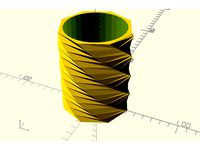
Faceted Drinking Cup by WilliamAAdams
...se for quite some years, but i was getting thirsty, so i designed this simple cup to test out printing with translucent filaments
thingiverse
free

Yazzo UClip Keyed by WilliamAAdams
...tandard key on the edge of it, so that you can attach something, or a number of things to it by sliding the key into their notch.
thingiverse
free
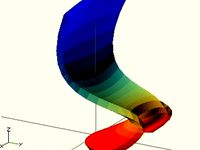
Cobra Chair by WilliamAAdams
... curves, and see how the curve reacts. it would probably be much easier to model with a different type of curve, but here it is.
thingiverse
free
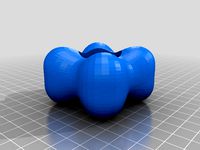
Coaster Blob by WilliamAAdams
...s a convenient blobby cup holder. put some sticky rubber feet pads on the bottom, and it will make a nice addition to your desk.
thingiverse
free

Yazzo Female Clevis by WilliamAAdams
...mm plastic filament probably. good enough for prototyping. printing on its side would probably be best for structural strength.
thingiverse
free
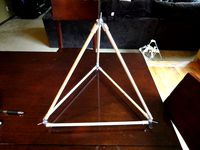
Simple Tetrahedron by WilliamAAdams
....
this thing is a simple vertex constructed from vinyl tubing. there are no actual files, only pictures that show the technique.
Openscad
thingiverse
free
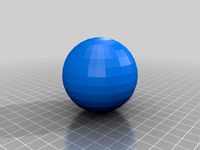
OpenSCAD sphere
...openscad sphere
thingiverse
basic project for openscad.
thingiverse
free
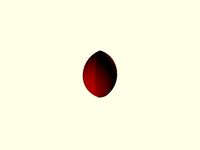
Openscad Football by KySyth
...openscad football by kysyth
thingiverse
openscad not tested
thingiverse
free

Openscad Apple by KySyth
...openscad apple by kysyth
thingiverse
openscad apple = not tested
thingiverse
free

Plugs with openscad by benengel
...plugs with openscad by benengel
thingiverse
plugs with openscad and fontawesome
thingiverse
free
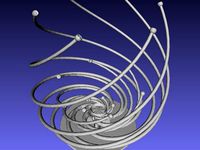
Openscad spirals by mafmuf
...openscad spirals by mafmuf
thingiverse
just fooling around with openscad.
thingiverse
free

Practice on OpenScad by ajensen906
...practice on openscad by ajensen906
thingiverse
a very crude practice on openscad
thingiverse
free
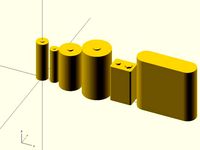
Batteries in OpenSCAD by roman_hegglin
...batteries in openscad by roman_hegglin
thingiverse
common batteries as modules for openscad.
thingiverse
free

OpenScad Propeller by KySyth
...se
trying to make a propeller with openscad = not tested
this is some of the results
added the openscad file but still need work
thingiverse
free
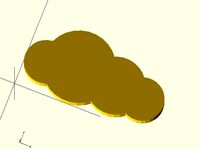
Openscad Cloud by Twanne
...openscad cloud by twanne
thingiverse
openscad cloud.
size can be adjusted
thingiverse
free

Geomag for OpenScad by vicnet
...geomag for openscad by vicnet
thingiverse
openscad file to design geomag things.
Solids
turbosquid
$70

Solider
...er
turbosquid
royalty free 3d model solider for download as on turbosquid: 3d models for games, architecture, videos. (1232788)
3d_export
$6

newjoy - solid
...;br>shelf - solid sd-1400 - 120х30х74<br>table - solid sd-1401 - 123х65х89<br>bookcase - solid sd-1500 - 85х35х176
3d_ocean
$3

Vray Solid Glass
...vray solid glass
3docean
3dmax glass material solid glass vray
vray solid glass for 3dmax
turbosquid
$5
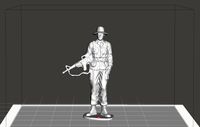
Toy Solider
...royalty free 3d model toy solider for download as png and stl on turbosquid: 3d models for games, architecture, videos. (1398359)
turbosquid
$1

Solid Table
...y free 3d model solid table for download as max, obj, and fbx on turbosquid: 3d models for games, architecture, videos. (1418669)
3d_export
$8

solid wood chair
...solid wood chair
3dexport
solid wood chair. have texture
turbosquid
$20

Solid Snake
... available on turbo squid, the world's leading provider of digital 3d models for visualization, films, television, and games.
turbosquid
$15

Chair solid
... available on turbo squid, the world's leading provider of digital 3d models for visualization, films, television, and games.
turbosquid
$11

archimedean solids
... available on turbo squid, the world's leading provider of digital 3d models for visualization, films, television, and games.
turbosquid
$5

Bed Solid
... available on turbo squid, the world's leading provider of digital 3d models for visualization, films, television, and games.
Surface
design_connected
$9
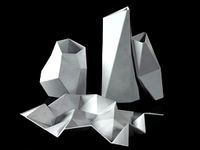
Surface
...surface
designconnected
rosenthal surface computer generated 3d model.
3d_export
$18
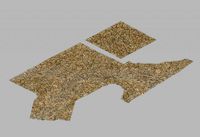
surface-cracked surface 27
...surface 27
3dexport
surface-cracked surface 27<br>max 2015 v-ray 3 max 2015<br>textures<br>all files in zip...
3d_export
$18
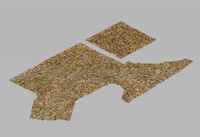
surface-cracked surface 27
...surface 27
3dexport
surface-cracked surface 27<br>max 2015 v-ray 3 max 2015<br>textures<br>all files in zip...
3d_export
$5
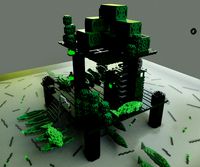
surface base
...surface base
3dexport
surface base
3ddd
$1
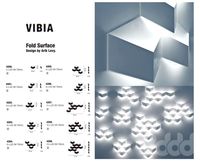
vibia fold surface
...vibia fold surface
3ddd
vibia fold surface , vibia
vibia fold surface
3d_export
$18
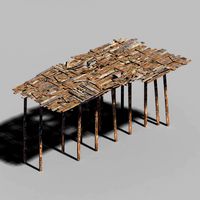
surface-yellow river dam-horizontal surface 03
...surface-yellow river dam-horizontal surface 03
3dexport
surface-yellow river dam-horizontal surface 03<br>3ds max 2015
3d_export
$18
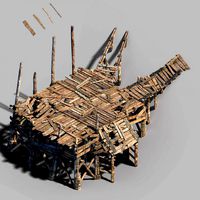
surface-yellow river dam-horizontal surface 01
...surface-yellow river dam-horizontal surface 01
3dexport
surface-yellow river dam-horizontal surface 01<br>3ds max 2015
3d_export
$10

surface book 2
...surface book 2
3dexport
surface book 2 laptop
3ddd
$1
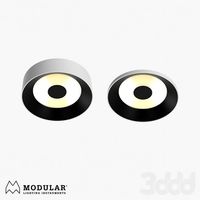
Modular Kurk Surface
...modular kurk surface
3ddd
modular
modular kurk surface
turbosquid
$38
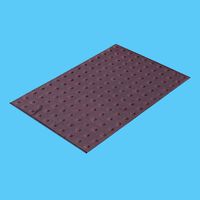
Barrier Surface
...ree 3d model barrier surface for download as ma, obj, and fbx on turbosquid: 3d models for games, architecture, videos. (1233275)
1
turbosquid
$69

armchairs(1)(1)
... available on turbo squid, the world's leading provider of digital 3d models for visualization, films, television, and games.
turbosquid
$15
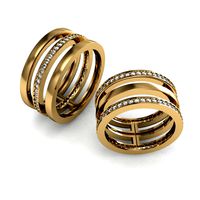
ring 1+1
... available on turbo squid, the world's leading provider of digital 3d models for visualization, films, television, and games.
turbosquid
$10
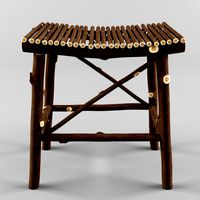
chair(1)(1)
... available on turbo squid, the world's leading provider of digital 3d models for visualization, films, television, and games.
turbosquid
$8

Chair(1)(1)
... available on turbo squid, the world's leading provider of digital 3d models for visualization, films, television, and games.
turbosquid
$2
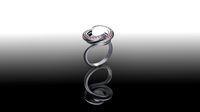
RING 1(1)
... available on turbo squid, the world's leading provider of digital 3d models for visualization, films, television, and games.
turbosquid
$1

house 1(1)
... available on turbo squid, the world's leading provider of digital 3d models for visualization, films, television, and games.
turbosquid
$1

Table 1(1)
... available on turbo squid, the world's leading provider of digital 3d models for visualization, films, television, and games.
turbosquid
$59
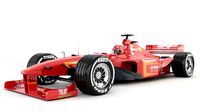
Formula 1(1)
...lty free 3d model formula 1 for download as max, fbx, and obj on turbosquid: 3d models for games, architecture, videos. (1567088)
design_connected
$11

No 1
...no 1
designconnected
sibast no 1 computer generated 3d model. designed by sibast, helge.
turbosquid
$2
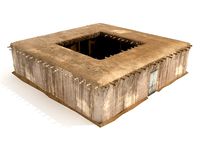
desert house(1)(1)
...3d model desert house(1)(1) for download as 3ds, max, and obj on turbosquid: 3d models for games, architecture, videos. (1055095)
2
design_connected
$11
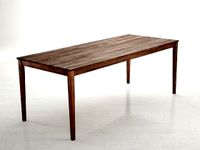
No 2
...no 2
designconnected
sibast no 2 computer generated 3d model. designed by sibast, helge.
turbosquid
$6
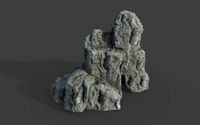
Cliff Rock 2-2
...uid
royalty free 3d model cliff rock 2-2 for download as obj on turbosquid: 3d models for games, architecture, videos. (1619161)
turbosquid
$29

Book variation 2 2
...3d model book variation 2 2 for download as max, obj, and fbx on turbosquid: 3d models for games, architecture, videos. (1366868)
turbosquid
$22

Classic baluster (2) (2)
...assic baluster (2) (2) for download as max, obj, fbx, and stl on turbosquid: 3d models for games, architecture, videos. (1483789)
turbosquid
$99
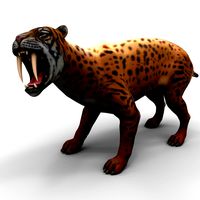
Smilodon 2 Pose 2
... available on turbo squid, the world's leading provider of digital 3d models for visualization, films, television, and games.
turbosquid
$20
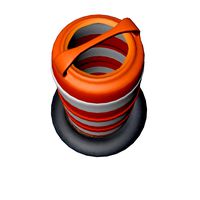
Barrel Barricade 2-2
... available on turbo squid, the world's leading provider of digital 3d models for visualization, films, television, and games.
turbosquid
$6

Wall Trophy (2) (2)
... available on turbo squid, the world's leading provider of digital 3d models for visualization, films, television, and games.
turbosquid
free
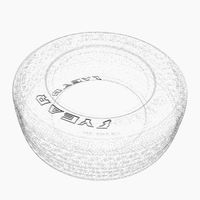
Tire label 2 of 2
... available on turbo squid, the world's leading provider of digital 3d models for visualization, films, television, and games.
3ddd
$1

Кровать, 2 тумбочки, 2 светильника
...кровать, 2 тумбочки, 2 светильника
3ddd
кровать, 2 тумбочки, 2 светильника
нормальное качество
формат 3ds max
без текстур
3ddd
free
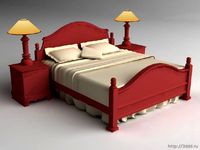
Кровать, 2 тумбочки, 2 светильника
...кровать, 2 тумбочки, 2 светильника
3ddd
кровать, 2 тумбочки, 2 светильника
нормальное качество
формат 3ds max
без текстур
